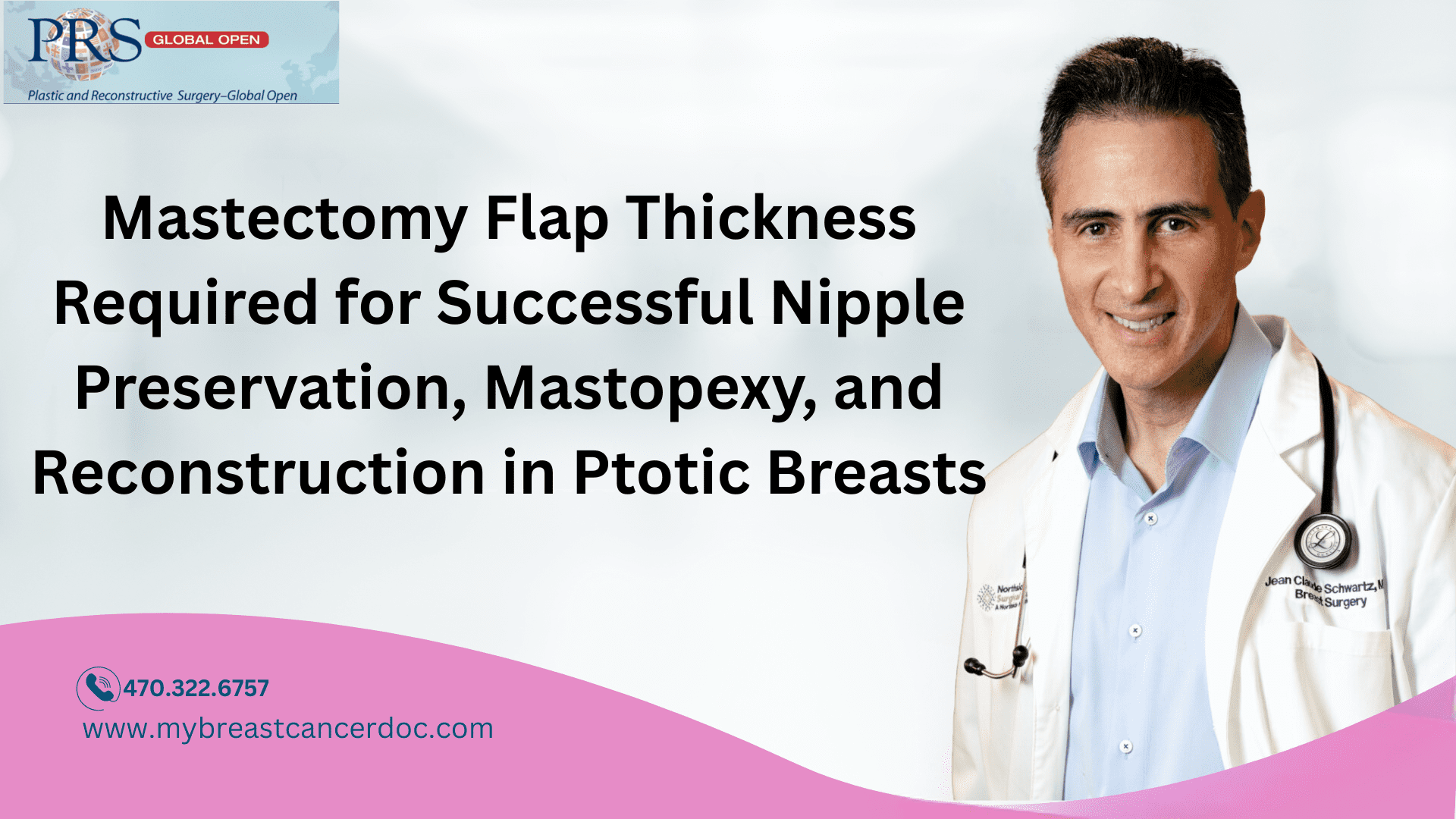Fax: 770-339-9804
Lawrenceville, Georgia 30046

Originally published on PRS Global Open website in May 2025
Although Spear1 initially described a 2-stage approach to nipple-sparing mastectomy (NSM) and implant reconstruction in ptotic patients, several studies have since described NSM, mastopexy, and immediate reconstruction in 1 stage.2 These approaches require both extirpation of all breast tissue and preservation of enough blood flow to support mastopexy and immediate, usually implant-based, reconstruction. Most reports mention use of “thick flaps” and rely on adipodermal, unipedicle inferior or medial pedicles.2 In my experience, unipedicle approaches have high rates of nipple necrosis. This led me to abandon unipedicle approaches and develop the modified bipedicle or “4-pedicle” approach to NSM, mastopexy and reconstruction2 for patients requiring implants smaller than 500 mL (Figs. 1, 2). (See figure, Supplemental Digital Content, which displays the patient 10 mo postoperative after her bilateral mastectomy, mastopexy, and direct-to-implant reconstruction. Despite her minimal subcutaneous tissue and very thin mastectomy flaps, meticulous dissection in the correct anatomical plane [excising all breast tissue] allows for preservation of the subdermal vascular plexus and subcutaneous perforators and successful reconstruction, https://links.lww.com/PRSGO/E54.)


Despite my contention that unipedicle approaches are unreliable, others have reported excellent outcomes for immediate mastopexy and reconstruction after mastectomy using these approaches.2 How can this be? A recent report by La Padula et al,3 which utilizes a “3-pedicles approach,” reports on mastectomy flap thickness and gives insight into how this might be. They document average mastectomy thickness of 2.78 cm ± 1.18 cm. Assuming a normal distribution that correlates with one-sixth of patients with mastectomy flaps of greater than 4 cm. As these authors use a “3-pedicle approach,” one might argue that others utilizing single or bipedicle techniques might leave more tissue behind. This places patients at an increased risk of cancer recurrence and new primary breast cancers, as recently shown.4 Previous work by Karp et al5 demonstrated average preoperative and postoperative mastectomy flap thicknesses of 1.14 and 0.87 cm, respectively, based on breast magnetic resonance imaging, far thinner than the mastectomy flaps left behind by La Padula et al.3 It is likely that most of these previous successful reports, as exemplified by that by La Padula et al,3 are leaving behind significant residual breast tissue, with flaps far thicker than would be considered acceptable for a standard mastectomy.
Instead of leaving behind thicker mastectomy flaps, I would encourage meticulous dissection and preservation of the “oncoplastic plane” to preserve the subdermal vascular plexus and subcutaneous perforators to ensure adequate blood flow to the skin and nipple-areolar complex while ensuring removal off all breast tissue. (See video [online], which demonstrates 3 examples of patients who underwent successful mastectomy with immediate mastopexy and direct-to-implant reconstruction despite having thin mastectomy flaps, confirmed on preoperative digital mammography. Meticulous dissection in the correct anatomical plane to preserve blood flow to the skin flaps and nipple, while making sure to remove all breast tissue and keeping all 4 “pedicles” intact, ensures a successful oncological and reconstructive outcome.) I would also discourage relying on a unipedicle and instead suggest preserving blood flow in multiple directions, as described in my modified bipedicle approach, to obtain the best oncological and aesthetic results.2 The modified bipedicle technique requires significant additional time and effort to perform, as exposure is limited. Surgeons must still confirm satisfactory blood flow to the nipple after mastectomy and implant placement to safely proceed with immediate reconstruction. Regardless of the surgeon’s technical expertise, a complete resection of all subareolar tissue may result in ischemia that mandates a 2-stage or delayed reconstruction. In patients who require postmastectomy radiotherapy, preoperative consultation with a radiation oncologist is recommended to ensure an appropriate size implant is chosen that does not interfere with radiotherapy or increase the risk of radiation toxicity to adjacent tissues.
Mastectomy examples. This video demonstrates three examples of patients that underwent successful mastectomy with immediate mastopexy and direct to implant reconstruction despite having thin mastectomy flaps, confirmed on preoperative digital mammography.
The author has no financial interest to declare in relation to the content of this article.